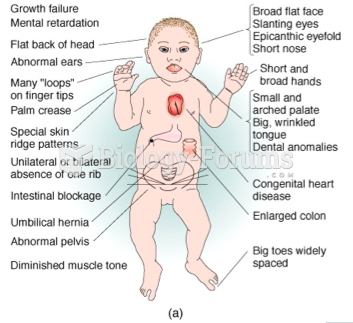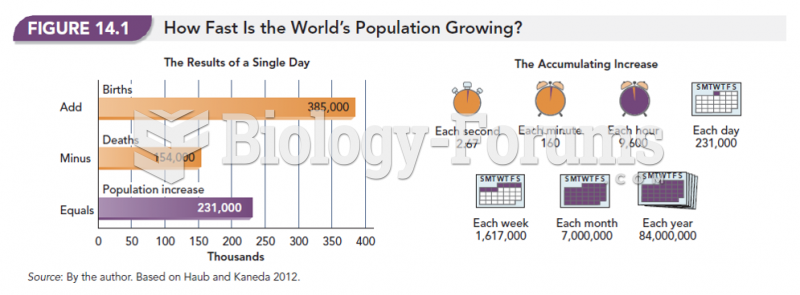|
|
|
Did you know?
Limit intake of red meat and dairy products made with whole milk. Choose skim milk, low-fat or fat-free dairy products. Limit fried food. Use healthy oils when cooking.
Did you know?
If you could remove all of your skin, it would weigh up to 5 pounds.
Did you know?
There are more nerve cells in one human brain than there are stars in the Milky Way.
Did you know?
In 1885, the Lloyd Manufacturing Company of Albany, New York, promoted and sold "Cocaine Toothache Drops" at 15 cents per bottle! In 1914, the Harrison Narcotic Act brought the sale and distribution of this drug under federal control.
Did you know?
If all the neurons in the human body were lined up, they would stretch more than 600 miles.







